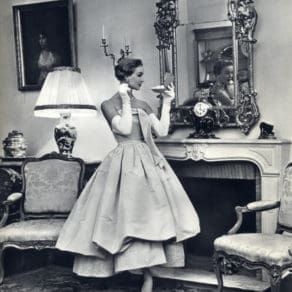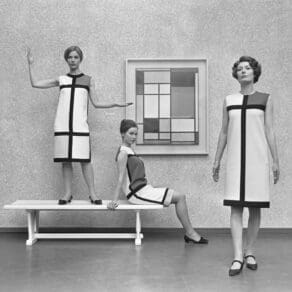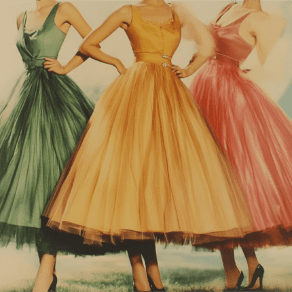Balls, black tie events, and formal dinners were all examples of 1950s social occasions that necessitated a 1950s evening dress. In the 1950s, an evening dress might have been needed for a variety of occasions, including but not limited to the following.
Fundraising dinners and balls
Various Formal Events for Freshmen
Launches of new operas and plays
Proms and other formal dances
Presentation of Awards
Diplomatic Receptions and State dinners
Celebrations with a degree of formality.
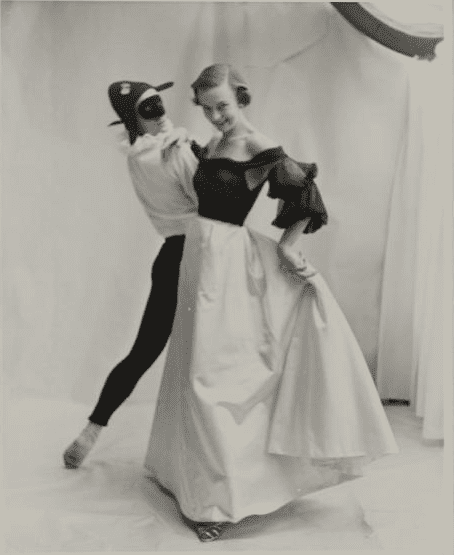
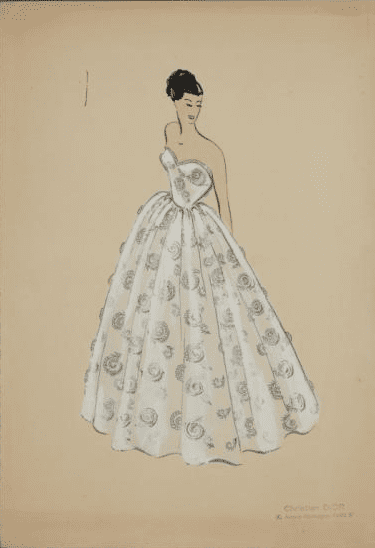
Both the ball gown and the A-line gown were common, the former featuring a full skirt and the latter a waist that is cinched in at the natural hips. Black, navy, red, and emerald green were typical colors.
It’s important to remember that back in the 1950s, people were expected to dress formally for more occasions than they are today.
Experience the evolution of elegance: Compare the sleek lines of 1940s evening dresses to the bold, feminine style of 1950s evening gowns
1950s evening dresses were characterized by full skirts, fitted bodices, and wide, pointed waistlines. Short or off-the-shoulder sleeved styles were common. Fabrics like silk or satin, known for their elegance and refinement, were frequently used.
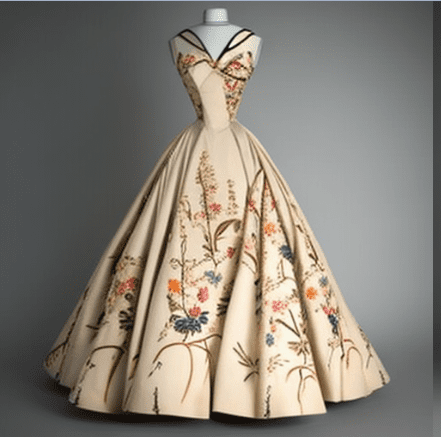

On the other hand, a 1940s evening gown was more figure-hugging and had longer, pointed sleeves. The skirts tended to be knee- or even shorter than that in length, and the waistlines were high.
The evening dress of the ’60s was more casual than those of previous decades, with an emphasis on simple, clean lines and materials like cotton and polyester. The waistlines were dropped and the skirt length was reduced from the styles of the 1950s and 1940s.
So the silhouette, waistline, sleeve length, and fabric make the biggest differences.
Some of the most recognizable and well-known evening gowns of the 1950s are:
Audrey Hepburn’s “Bar Suit” from the 1954 film Sabrina. Hubert de Givenchy created this simple yet sophisticated black sheath with a large white collar and a long black satin belt.
Marilyn Monroe’s “Pink Dress” from the 1955 film The Seven Year Itch. Designed by William Travilla, the dress is a pink, full-skirted, halter-neck number that famously billowed up in a subway grate scene.
Gold dress, as worn by Elizabeth Taylor in Giant (1956). This stunning Helen Rose creation is a gold, full-skirted evening gown with an intricately beaded bodice.
Grace Kelly’s “White Dress” from High Society (1956). Dress by Edith Head is a sweetheart-necked, strapless, full-skirted, white number.
Audrey Hepburn’s “Black Dress” from the film Funny Face, released in 1957. Hubert de Givenchy created this simple yet sophisticated black sheath dress with a high neck and long sleeves.


